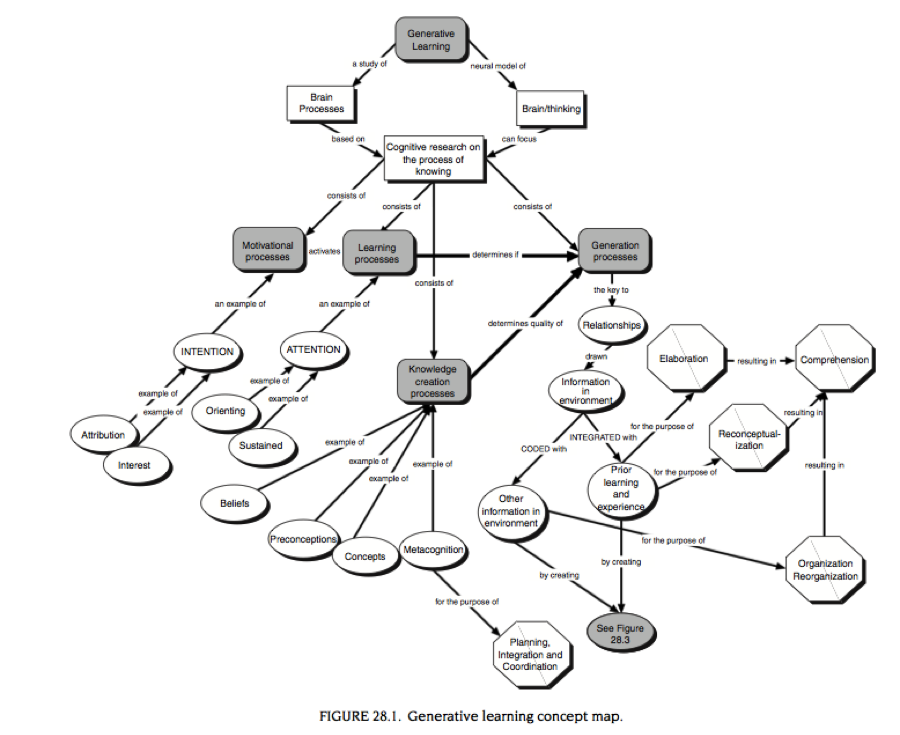Generative Learning
(Grabowski, 2007, p. 719-723)
Generative learning and generative teaching theory combines the importance of learner and instructional intentionality. Often times called the “practical cousin” of constructivism.
Wittrock is the founder of generative learning. His work explains and prescribes teaching strategies to maximize reading comprehension. Whereas most of the original research deals specifically with reading comprehension, in theory there is much transferability to learning for understanding in general, regardless of the medium or form of the external stimuli.
The learner is not a passive recipient of information; rather he or she is an active participant in the learning process, working to construct meaningful understanding of information found in the environment.
Wittrock emphasized the importance of and difference between two types of learner-generated relationships: first, among the different parts of the external stimuli (information being perceived) and, second, between that information and the learner’s prior knowledge. Comprehension occurs from formulating connections, rather than solely by the function of “placing” information or “transferring” information in memory. The subtle difference lies in the creation of new understanding of the information by the learner, rather than changing of the presented information. The teacher or designer’s role is “knowing how and when to facilitate the learner’s construction of relations[hips],” (Wittrock, 1990, p. 352).
Wittrock’s three other component processes that explain learning are motivational processes, learning processes, and knowledge creation process.
Generative learning and generative teaching theory combines the importance of learner and instructional intentionality. Often times called the “practical cousin” of constructivism.
Wittrock is the founder of generative learning. His work explains and prescribes teaching strategies to maximize reading comprehension. Whereas most of the original research deals specifically with reading comprehension, in theory there is much transferability to learning for understanding in general, regardless of the medium or form of the external stimuli.
The learner is not a passive recipient of information; rather he or she is an active participant in the learning process, working to construct meaningful understanding of information found in the environment.
Wittrock emphasized the importance of and difference between two types of learner-generated relationships: first, among the different parts of the external stimuli (information being perceived) and, second, between that information and the learner’s prior knowledge. Comprehension occurs from formulating connections, rather than solely by the function of “placing” information or “transferring” information in memory. The subtle difference lies in the creation of new understanding of the information by the learner, rather than changing of the presented information. The teacher or designer’s role is “knowing how and when to facilitate the learner’s construction of relations[hips],” (Wittrock, 1990, p. 352).
Wittrock’s three other component processes that explain learning are motivational processes, learning processes, and knowledge creation process.
